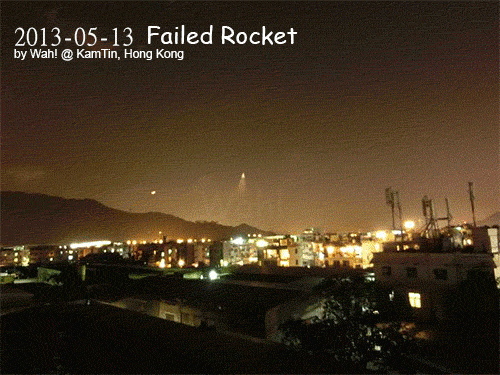Pentagon Says 2013 Chinese Launch May Have Tested Antisatellite Technology

WASHINGTON — The U.S. Defense Department is suggesting that the May 2013 launch of a Chinese rocket that it branded at the time as suspicious was a test of a technology designed to counter or destroy satellites in geosynchronous orbit.
China characterized the launch as a scientific sounding rocket mission, but the U.S. Air Force said the vehicle's trajectory was inconsistent with that explanation. In a statement released shortly after the launch, the service said the rocket climbed to a nearly geosynchronous-orbit altitude — 36,000 kilometers high — but that all objects associated with the launch subsequently re-entered the atmosphere.
In its latest annual report on Chinese military power, released May 8, the Pentagon doubled down on its initial assessment.
"The launch profile was not consistent with traditional space-launch vehicles, ballistic missiles or sounding rocket launches used for scientific research," the report said. "It could, however, have been a test of technologies with a counterspace mission in geosynchronous orbit."
Air Force and Defense Department officials have repeatedly warned over the past year about growing Chinese and Russian threats to satellite capabilities. In the case of China, these officials have primarily cited two events: China's deliberate destruction in 2007 of one of its own low-orbiting satellites with a ground launched missile; and a "nondestructive" anti-satellite test in 2014.

In its latest "Annual Report to Congress: Military and Security Developments Involving the People's Republic of China 2015," the Pentagon said the 2014 launch had a "similar profile" to the 2007 launch. Chinese officials described the 2014 event as a missile defense test.
The Pentagon had been largely mum about the 2013 launch between its initial assessment and the release of the new report on China's military. But independent observers have been less restrained.
Get the Space.com Newsletter
Breaking space news, the latest updates on rocket launches, skywatching events and more!
"While there is no conclusive proof, the available evidence strongly suggests that China's May 2013 launch was the test of the rocket component of a new direct ascent [anti-satellite] weapons system derived from a road-mobile ballistic missile," Brian Weeden, technical adviser to the Secure World Foundation, a nonprofit organization dedicated to space sustainability, said in an analysis released in March 2014.
According to a 2013 press release from the Chinese Academy of the Sciences' National Space Science Center, the sounding rocket was launched from Xichang Satellite Launch Center and carried payloads for studying the high-energy particles in the upper atmosphere and near-Earth space.
"The launch appeared to be on a ballistic trajectory nearly to geosynchronous Earth orbit," Lt. Col. Monica Matoush, a Pentagon spokeswoman, wrote in an email to SpaceNews on May 16, 2013. "We tracked several objects during the flight but did not observe the insertion of any objects into orbit and no objects associated with this launch remain in space. Based upon observations, we assess that the objects re-entered the atmosphere above the Indian Ocean."
The cat-and-mouse game in space between the United States and China was the subject of a recent segment on the popular CBS News program 60 Minutes. The segment included the following exchange between CBS News' David Martin and Gen. John Hyten, commander of Air Force Space Command:
Martin: These follow on Chinese tests, how high up do they go?
Hyten: Pretty high. [smiles]
Martin: Well, how high's that?
Hyten: I won't characterize what– what the Chinese capabilities are. I just will tell you that we know what they are.
This story was provided by SpaceNews, dedicated to covering all aspects of the space industry.
Join our Space Forums to keep talking space on the latest missions, night sky and more! And if you have a news tip, correction or comment, let us know at: community@space.com.
Mike Gruss is a veteran defense reporter and Editor-in-Chief of Sightline Media Group, which includes Army Times, Air Force Times, Dense News, Military Times and Navy Times. From 2013 to 2016, Mike served as a Senior Staff Writer for SpaceNews covering national security space programs and military space policy in the U.S. Congress. Mike earned a bachelor's degree in English and American Studies from Miami University and has previously wrote for the Journal Gazette in Fort Wayne, Indiana and the Virginian-Pilot in Virginia before joining SpaceNews. Prior to joining Sightline in 2017, he was a senior editor of FedTech magazine covering technology in federal government. You can see Mike's latest project on Twitter.










